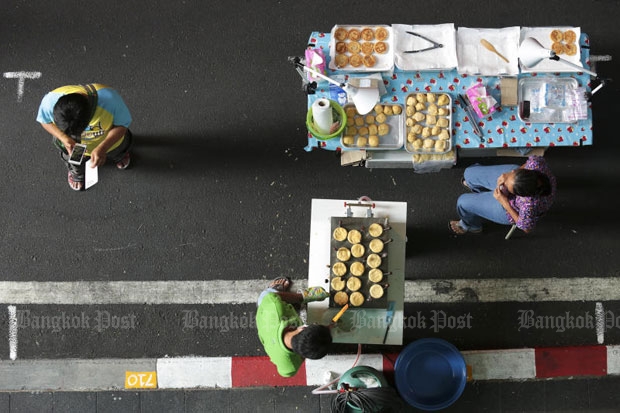
Five roads in the city centre and old town have been found to be the city's most "pedestrian-friendly", a Chulalongkorn University study shows.
The five roads are Ratchawong Road, Chakrabongse Road, Rama I Road, Silom Road and Phra Athit Road.
Out of a total of 965 roads in 34 areas of the capital surveyed, these roads were ranked in the top-five because they were rated as having adequate lighting, smooth surfaces, a high degree of safety, convenience and liveliness, said Asst Prof Niramon Kulsrisombat who leads a project called Muang Doen Dai Maung Doen Di (pedestrians' ideal cities).
The study conducted by the university's Urban Design and Development Centre was presented on Thursday.
The results were based on the first two phases of the study designed to explore the hidden potential of Bangkok's roads to become ideal walkways for people who may prefer to travel on foot if the routes they take to commute are suitable for walking.
Of all roads surveyed, 134 were found to have good potential to become ideal routes for pedestrians if developed properly, said Ponnsan Wichienpradit, one of the researchers in the study.
These roads are clustered in three zones of the capital, namely Rattanakosin Island, Siam-Pathumwan and Yaowarat, Mr Ponnsan said.
In the first phase, conducted between March 2014 and last February, the researchers found that Bangkok clearly has the potential to become a city where people can, in certain areas, get around on foot in daily life, leaving their cars at home, Asst Prof Niramon said.
These areas included Rattanakosin, Siam-Pathumwan, Sathon, Bang Rak, Victory Monument, Yaowarat and Sampheng, she said.
In the second phase of the study, conducted from last March until earlier this month, the researchers identified common obstacles that made most of Bangkok's roads not ideal places to walk.
Obstacles include stalls, lack of structures designed to provide shade and shield pedestrians from rain, insufficient lighting and pavements that are dirty or full of potholes.
In the next and last phase, expected to begin in April, the research team plans to select some areas to pilot a project to turn Bangkok's roads into ideal pedestrian walkways. At the end of the last phase, the team will hand the results to City Hall.